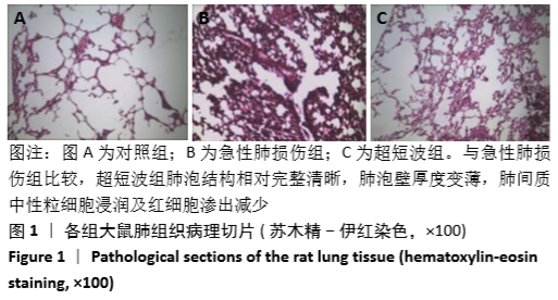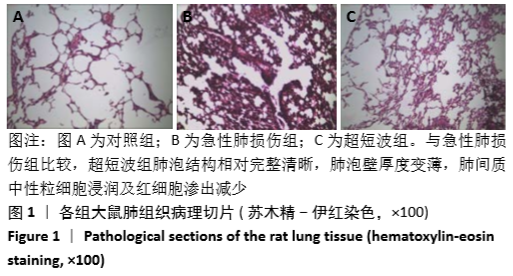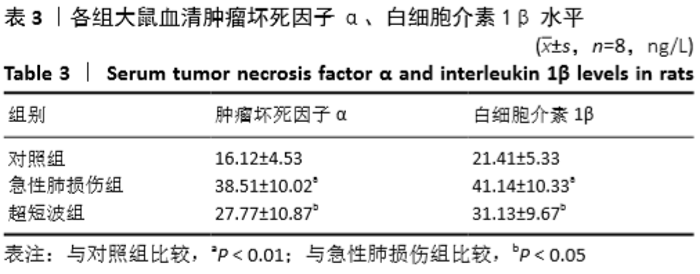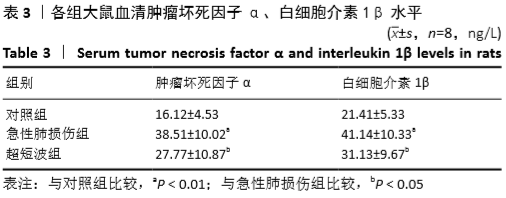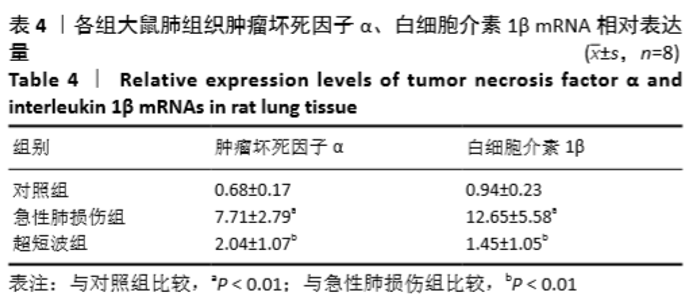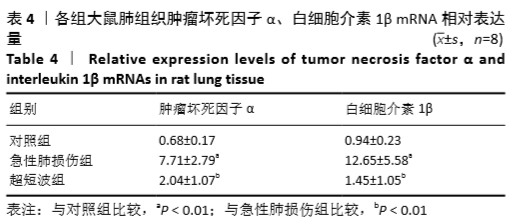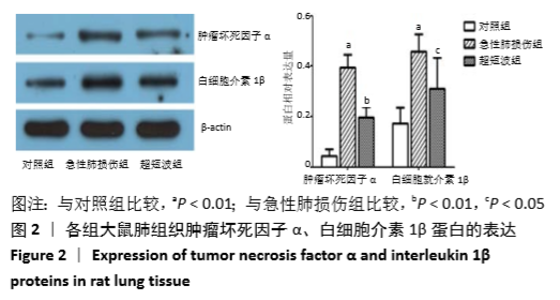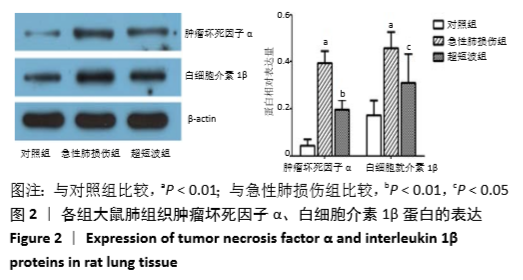[1] 陈灏珠,林果为,王吉耀,等.实用内科学[M].14版,北京:人民卫生出版社,2013:182-182.
[2] 马李杰,李王平,金发光.急性肺损伤/急性呼吸窘迫综合征发病机制的研究进展[J].中华肺部疾病杂志(电子版),2013,6(1):65-68.
[3] 刘涛,任成山.炎症介质在急性肺损伤/急性呼吸窘迫综合征发病机制中的作用[J].中华肺部疾病杂志(电子版),2013,6(3):265-269.
[4] MACA J, JOR O, HOLUB M, et al. Past and present ARDS mortality rates: a systematic review. Respir Care. 2017; 62(1): 113-122.
[5] GOATS GC. Continuous short-wave (radio-frequency)diathermy.Br J Sports Med.1989;23(2):123-127.
[6] 刘靖.短波联合紫外线照射辅助治疗小儿肺炎临床观察[J].实用中医药杂志,2017,33(7):801-802.
[7] 袁显文,张慧娟,曲宝迪,等.超短波治疗仪辅助治疗儿童支原体肺炎中血清C反应蛋白表达水平的研究[J].山西医药杂志,2018,47(24): 2947-2948.
[8] 斯琴高娃,王玲.抗生素联合超短波治疗坠积性肺炎的临床观察[J].中国冶金工业医学杂志,2018,35(4):444-445.
[9] 蒋建伟,王波兰,冯文斌.振动排痰联合超短波治疗在脑卒中患者并发坠积性肺炎中的应用[J].按摩与康复医学,2018,9(3):27-28.
[10] 周博.超短波治疗小儿肺炎疗效评价[J].中国中医药现代远程教育, 2012,10(4):151.
[11] 裴璠,沈姗怡,刘保红.超短波治疗膝骨性关节炎作用机制研究进展[J].中国慢性病预防与控制,2018,26(7):542-545.
[12] 卞向荣,胡恒,魏玮.超短波联合药物治疗小儿肺炎的临床效果[J].检验医学与临床,2017,14(14):2007-2008.
[13] ROCCO PR,ZINWA.Pulmonary and extrapulmonary acute respiratory distress syndrome:are they different.Curr Opin Crit Care.2002;11(1):10-17.
[14] 王婷,梁华平,柴鉴深,等.三种大鼠急性肺损伤模型的比较[J].成都医学院学报,2016,11(1):5-9.
[15] 焦光宇,聂志伟,刘春利,等.小剂量脂多糖气管内滴注制备急性肺损伤动物模型的探究[J].中国实验动物学报,2007,15(4):292-295+231.
[16] 陈娇,钱晓明,聂时南.急性肺损伤动物模型的研究现状[J].医学研究生学报,2013,26(8):851-854.
[17] 韩枫,凌心.吡非尼酮及盐酸氨溴索对百草枯诱导的大鼠急性肺损伤保护作用的比较[J].成都医学院学报,2014,9(1):15-17+73.
[18] WANG Q, ZHENG X, CHENG Y, et al. Resolvin D1 stimulates alveolar fluid clearance through alveolar epithelial sodium channel, Na,K-ATPase via ALX/cAMP/PI3K pathway in lipopolysaccharide-induced acute lung injury.J Immunol. 2014;192(8):3765-3777.
[19] WARD PA, GRAILER JJ. Acute lung injury and the role of histones. Transl Respir Med.2014;2:1.
[20] BAO H, GAO F, XIE G, et al. Angiotensin-Converting Enzyme 2 Inhibits Apoptosis of Pulmonary Endothelial Cells During Acute Lung Injury Through Suppressing MiR-4262.Cell Physiol Biochem. 2015;37(2):759-767.
[21] LIU S, TANG J, HUANG L, et al. Cordyceps Militaris Alleviates Severity of Murine Acute Lung Injury Through miRNAs-Mediated CXCR2 Inhibition. Cell Physiol Biochem. 2015;36(5):2003-2011.
[22] DENG X, JIN K, LI Y, et al. Platelet-derived growth factor and transforming growth factor beta1 regulate ARDS-associated lung fibrosis through distinct signaling pathways. Cell Physiol Biochem. 2015;36(3):937-946.
[23] SEKI H, TASAKA S, FUKUNAGA K, et al. Effect of Toll-like receptor 4 inhibitor on LPS-induced lung injury. Inflamm Res.2010;59(10):837-845.
[24] PATEL B V, WILSON M R, O’DEA K P, et al. TNF-induced death signaling triggers alveolar epithelial dysfunction in acute lung injury. J Immunol. 2013; 190(8):4274-4282.
[25] PIERRAKOS C,KARANIKOLAS M,SCOLLETTA S, et al. Acute respiratory distress syndrome:pathophysiology and therapeutic options. J Clin Med Res.2012;4(1):7-16.
[26] KELLNER M, NOONEPALLE S, LU Q, et al. ROS signaling in the pathogenesis of acute lung injury (ALI) and acute respiratory distress syndrome (ARDS). Adv Exp Med Biol.2017;967: 105-137.
[27] 南登昆,缪鸿石.康复医学[M].北京:人民卫生出版社,1993:106-109.
[28] SUFFREDINI AF, REDA D, BANDS SM, et al .Effects of recombinant dimeric TNF receptor on inflammatory responses following intravenous endotoxin administration.J Immunol.1995;155(10):5038-5045.
[29] AKGÜN B, OZTURK S, ARTAS G, et al. Effects of intrathecal caffe-ic acid phenethyl ester (CAPE) on IL- 6 and TNF- α levels and local inflammatory responses in spinal cord injuries. Turk Neurosurg. 2018;28(4):625-629.
[30] BEATTIE MS. Inflammation and apoptosis: linked therapeutic targets in spinal cord injury. Trends Mol Med.2004; 10(12): 580-583.
[31] PENG RJ, JIANG B, DING XP, et al. Effect of TNF-α inhibitionon bone marrow-derived mesenchymal stem cells in neurologi-cal function recovery after spinal cord injury via the Wnt signaling pathway in a rat model. Cell Physiol Biochem. 2017;42(2): 743-752.
[32] ANTTILA JE,WHITAKER KW,WIRES ES,et al.Role of microglia in ischemic focal stroke and recovery focus on Toll-like receptors.Prog Neuropsychopharmacol Biol Psychiatry. 2017;79(Pt A):3-14.
[33] ZHANG Z, CHEN N, LIU JB, et al.Protective effect of resveratrol against acute lung injury induced by popolysaccharide via inhibiting the myd88-dependent Toll-like receptor 4 signaling pathway.Mol Med Rep.2014; 10( 1) : 101-106.
[34] 葛均波,徐永健,王辰.内科学[M].9版,北京:人民卫生出版社,2018: 41-61.
[35] LEITGEB N, OMERSPAHIC A, NIEDERMAYR F. Exposure of non-target tissues in medical diathermy. Bioelectromagnetics. 2010;31(1):12-19. |
